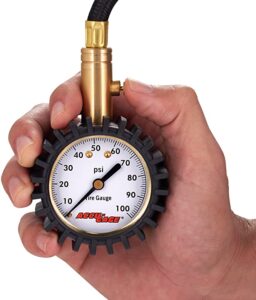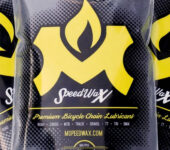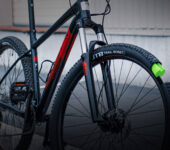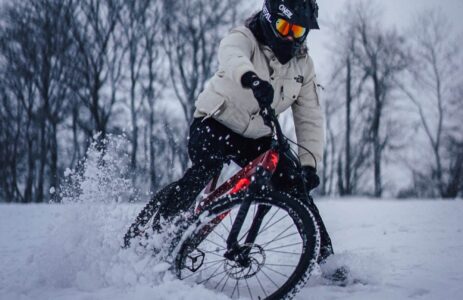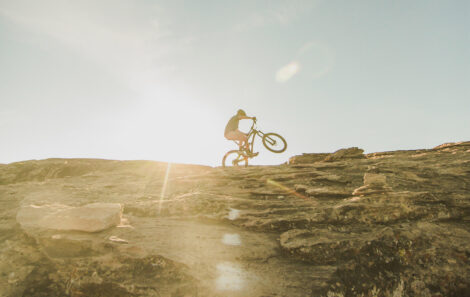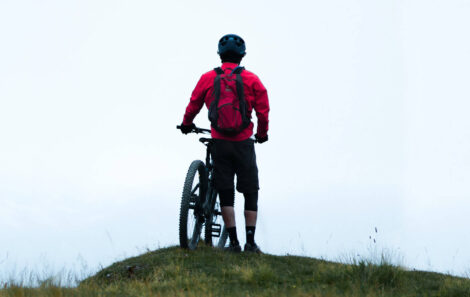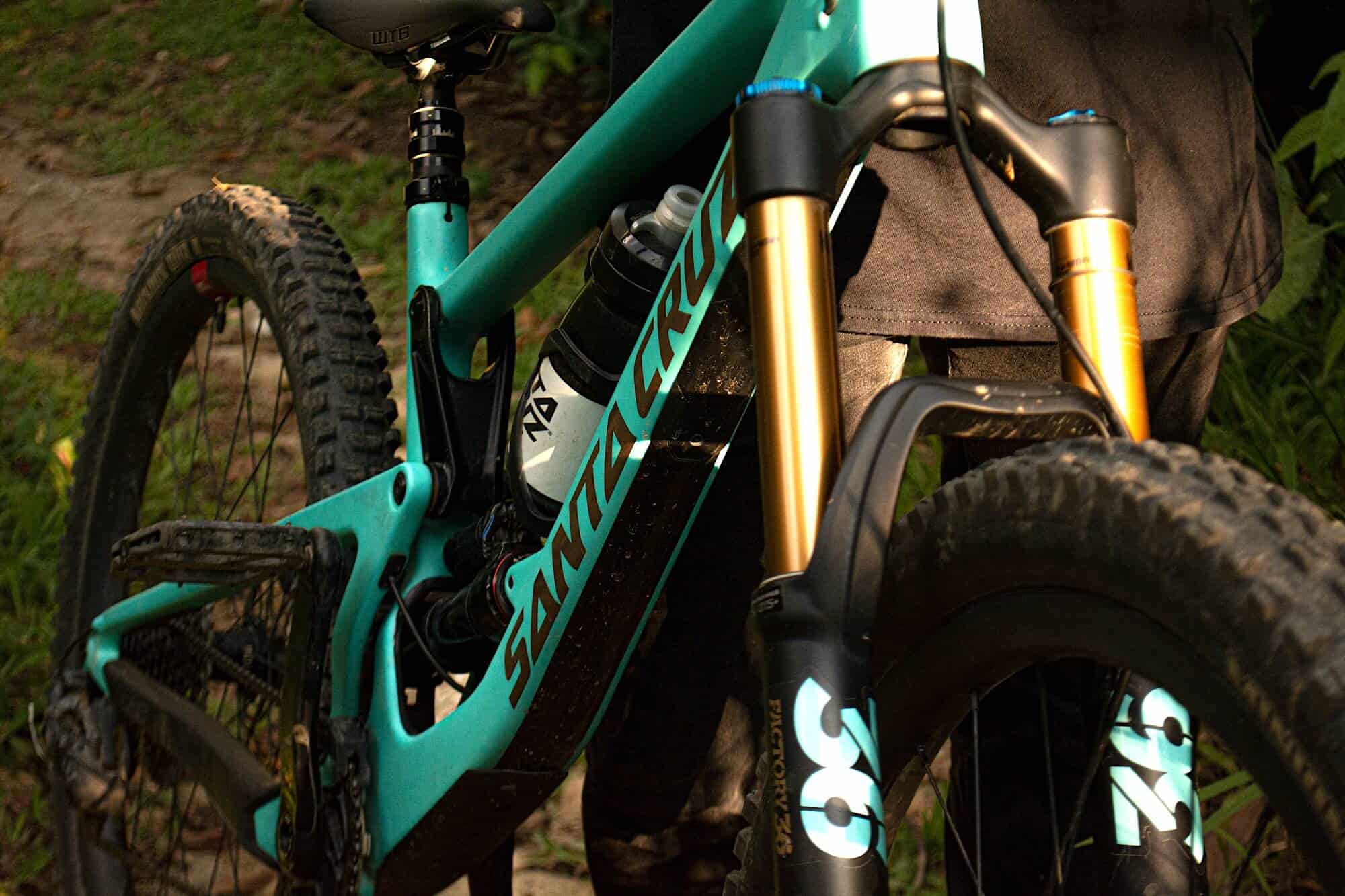
Photo by Lukas Smith
What bike tire pressure do you run in your mountain bike tires? Do you know?
Although not as glamorous as attaching to your bike the latest whatsit or hoohah (you know the one made out of unicorn bones with the revolutionary Emporers-New-Clothes coating). Almost nothing affects the way your bike rides as much as tire pressure.
The variables that influence your ideal tire pressure are myriad. Rider weight, tire casing, rim width, terrain, riding style, astrological sign, suspension travel, wheel size, tire volume, moon phase, and whether or not you flossed that morning can all influence your ideal tire pressure.
A little bike tire pressure history
In the early 2000s, when 26″ wheels roamed the land and before tubeless came to mountain bikes, you were almost guaranteed to flat if your pressure wasn’t in the mid-’30s. And flat we did, over and over again. I distinctly remember flatting so often it was a non-event. Fixing flats was just part of the ride.
When Stan Koziatek introduced Stan’s NoTubes tubeless system, it allowed mountain bikers everywhere to run their tires in the pillowy high 20s and only flat occasionally.
Bike tire pressure innovation
In the last 5 years, plus tires and inserts allowed pressures to plummet precipitously. Especially when used together. On my hardtail, I’m running an unthinkable 12-14psi! This is permitted by 2.6″ Maxxis Dissectors with an EXO casing, 30mm internal rims, and Cushcore. I’ve been ragging this setup for 8 months without issue. What a time to be alive!
Low pressures allow your tire to conform to irregular terrain. So instead of being forced to lift your body and bike up over every little bump, your bike can glide right over. This is not only more efficient, but it also offers greater comfort and control.
The downside of low tire pressure is twofold. First, your tire spends energy constantly flexing the casing of the tire. This is a major contributor of rolling resistance, particularly on smooth terrain. Secondly, tires at low pressures that are not adequately supported can squirm in corners, which saps confidence and feels unnerving.
How to find your correct bike tire pressure
Finding your correct tire pressure is all about experimentation. I highly recommend picking up an accurate analog or digital tire pressure gauge. Beyond knowing your tire pressure, here are some general recommendations.
- For standard 2.2-2.5″ tires, start off at 30psi and drop 2 psi until it feels too squirmy or you hit rim, then add 2 psi.
- For larger volume tires, start off at 20 psi and drop 2 psi until it feels too squirmy or you hit rim, then add 2 psi.
- If running inserts, subtract 4-6 psi.
- If running downhill casings, subtract 3 psi.
- If hitting rim, add 2 psi.
Your front tire will typically have 2-3 psi less pressure than your rear tire.
Another thing to be mindful of is temperature and elevation changes. If your bike is stored in a heated area, your tire pressure will drop by a few psi when riding in cold temperatures. Also, major atmospheric pressure differences can affect your tire pressure a few psi. Therefore, it’s wise to inflate your tires in the same conditions you’ll be riding in, temperature and elevation being the most important.
This guide is a gross oversimplification, but it’ll hopefully be a helpful guide. What tire pressure do you run?
Peter Haile
Whether pushing his limits on technical trails, seeing what’s around the next corner, or tinkering in his shop; Peter enjoys life to the full. In addition to bikes, he enjoys frame building, graphic design, and math. He lives in Asheville, NC with his wife and son.
Get the email for busy mountain bikers.
Discover the best products + gear, and learn about deals from brands you love.
